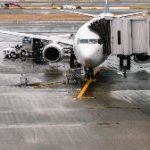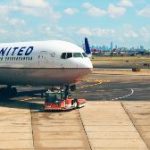Mining and industrial cargo forms a significant share of freight moved between Sydney and Perth. Western Australia’s mining sector relies heavily on fast access to equipment, replacement parts, maintenance supplies, and engineering materials, making air transport an essential link between the east coast manufacturing base and the state’s remote operational hubs. For context on how domestic air logistics operates through Sydney Airport, see the main guide on Air Freight Services Sydney Airport.
1. Types of Mining and Industrial Cargo
Shipments commonly transported along this route include:
Machinery components such as pumps, valves, motors, and bearings
Engineering and construction materials for ongoing site development
Electrical and automation equipment used in mining operations
Drilling tools and consumables
Maintenance, repair, and operations (MRO) supplies
AOG-style critical parts for site machinery breakdowns
Safety gear and industrial protective equipment
These items often need fast delivery due to strict operational schedules and the high costs of equipment downtime.
2. Why Air Freight Is Critical for Mining Operations
Mining sites across Western Australia operate on tight production timelines. Air transport is preferred for:
Urgent breakdown repairs
Just-in-time supply strategies
Avoiding production delays
Maintaining fleet availability
Supporting infrastructure upgrades in remote regions
Road freight is used for bulk cargo, but air freight provides the speed required when delays would be costly.
3. Handling Requirements for Industrial Equipment
Mining and industrial shipments must meet specific handling standards, especially for large or heavy items:
Secure palletisation to prevent load shifting
Use of airline-approved crates or skids
Effective strapping and reinforcement
Accurate weight and dimension declarations
Stability checks for irregular items
Because many components are dense or oddly shaped, correct weight distribution is essential for aircraft loading.
4. Oversized and High-Density Cargo Considerations
Industrial freight often pushes the limits of domestic aircraft capacity. Airlines may apply special conditions for:
Oversized cargo that requires main-deck loading
High-density freight that affects aircraft balance
Uncrated metal components needing extra protection
Long-length items like pipes, beams, and drilling rods
Some shipments may require freighter aircraft rather than standard passenger services.
5. Dangerous Goods Within Industrial Shipments
Mining-related freight may contain items classified as Dangerous Goods, including:
These must comply with the IATA Dangerous Goods Regulations (DGR), including proper documentation, packaging, and labelling.
6. Transit Times Between Sydney and Perth
Mining and industrial cargo typically follows the same flight schedule as other domestic freight. Most airlines offer:
Multiple departures daily
Priority uplift options for urgent parts
Early cut-off times for heavy or oversized equipment
Transit times are predictable, which keeps maintenance planning and inventory management on track.
7. Best Practices for Businesses Shipping Industrial Freight
To keep shipments smooth and compliant:
Provide accurate weights, dimensions, and freight descriptions
Use reinforced or engineered packaging for heavy components
Confirm airline requirements for oversized freight
Prepare documentation early for urgent items
Work with handlers familiar with mining-sector logistics
Schedule proactively to avoid delays during peak mining periods
Strong planning reduces the risk of missed flights, extra fees, or handling complications.












